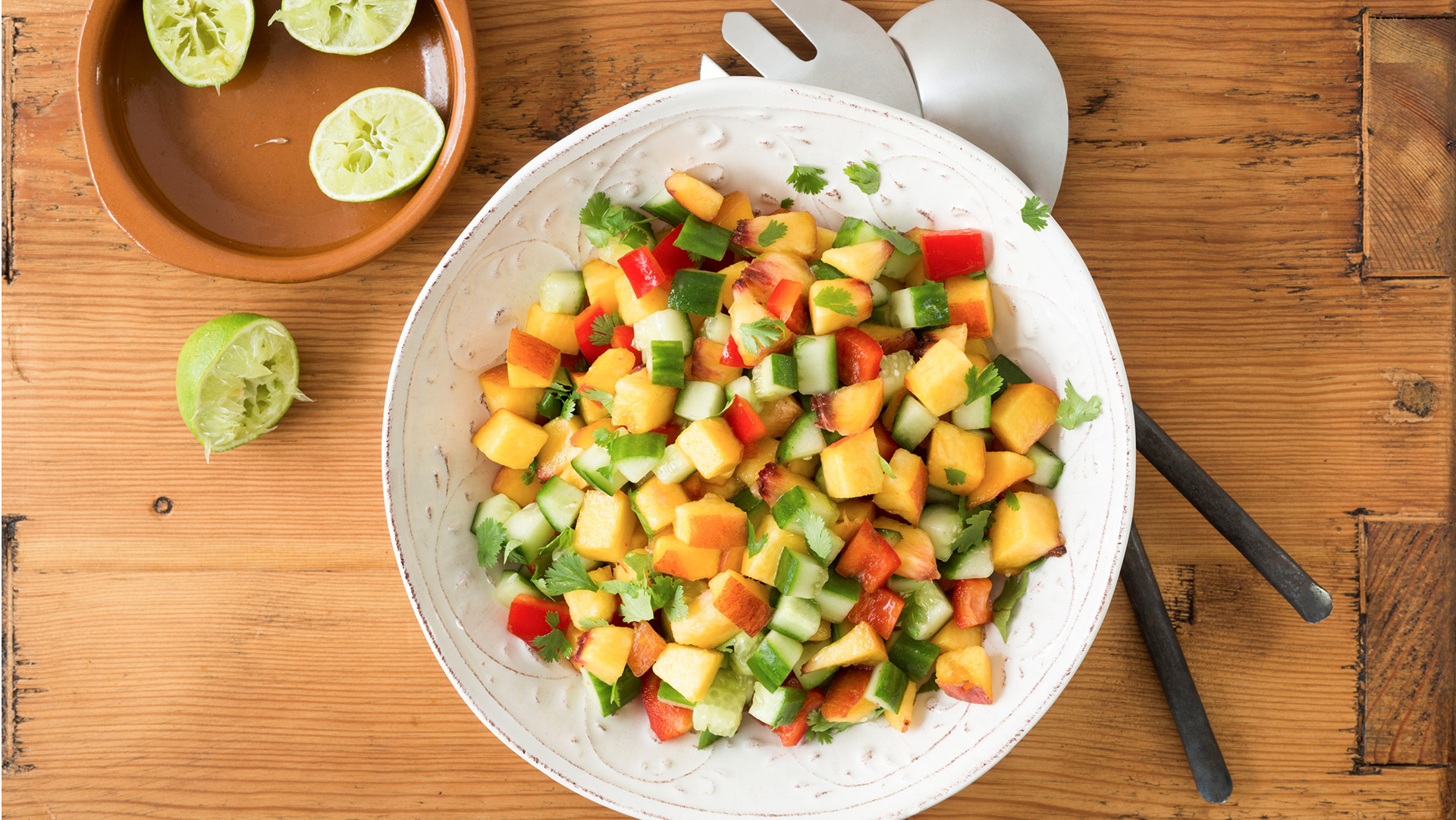-
There’s been a lot of talk about FODMAPs in recent years. Understanding what it means could be important in alleviating symptoms of Irritable Bowel Syndrome (IBS).
What are FODMAPs?
FODMAP stands for Fermentable Oligo-, Di-, Monosaccharides and Polyols. Essentially, they’re a group of carbohydrates that some people have trouble absorbing. This can cause IBS symptoms, such as abdominal pain, bloating, diarrhoea, constipation and flatulence.
- Fermentable: The process through which gut bacteria ferments undigested carbohydrates, producing gases.
- Oligosaccharides: Fructans and galactooligosaccharides (GOS), found in onion, garlic, wheat, rye and legumes such as baked beans, lentils and chickpeas.
- Disaccharides: Lactose, which includes milk, yoghurt, custard and soft, unripened cheeses.
- Monosaccharides: Excess fructose found in apples, honey, high fructose corn syrup and mangoes.
- Polyols: Sorbitol and mannitol, which are found in mushrooms, apples, pears, nectarines and a range of artificial sweeteners.
Pioneering research from Monash University led to the creation of the low FODMAP diet in 2012. The idea is to restrict high FODMAP foods for 2-6 weeks to determine if FODMAPs are causing your symptoms, then gradually introduce some foods back in to identify which ones are your specific triggers.
MORE: Understanding FODMAPS and IBS
My week-long trial of the low FODMAP diet
Around five years ago I was diagnosed for IBS via the ‘breath test’. This involves visiting a hospital and measuring the amount of gas in your breath after swallowing an amount of sugar. If these sugars are poorly absorbed, the intestinal bacteria ferment the sugar to produce gasses, including hydrogen and methane.
Now, with the FODMAP Diet app in hand (available via the App Store and Google Play), I gave the low FODMAP diet a go.
And it was quite an experience. For seven days I limited my FODMAP intake. Here’s a taste of my week’s menu:
- Porridge with ½ a cup of lactose-free milk, topped with strawberries.
- Peanut butter (no sugar, no salt) on two slices of gluten free bread.
- A pre-made gluten free pizza, topped with tomato paste, ½ bunch of fresh basil, handful of rocket, ½ a punnet of cherry tomatoes and 30 g of reduced fat mozzarella cheese.
- Salad made from basil, spinach, rocket, pine nuts, parmesan and olive oil on gluten free pasta.
- A salmon fillet, handful of Lebanese cucumber, ¼ red capsicum, ¼ bunch of fennel leaves, ½ a lemon (juiced) and 2 tablespoons of low fat feta cheese.
The verdict: one week down
Overall I felt better! My energy levels improved; important for my twice-weekly PT sessions and once-weekly tennis lesson. My sleep also improved.
How long should you stay on the low FODMAP diet?
Jane Muir is head of Translational Nutrition Science in the Department of Gastroenterology at Monash University. As she explains, she’s been leading the team responsible for “quantifying the levels of FODMAPs in food, and then developing the low FODMAP diet used in dietary studies.”
An enormous amount of people have used the low FODMAP diet to improve their IBS symptoms. But the goal isn’t to cut out all FODMAPs indefinitely. In fact, Jane outlines the three steps to reducing the symptoms of IBS using FODMAP knowledge:
- Step 1 – Follow the low FODMAP diet, which takes 2-6 weeks.
- Step 2 – Reintroduce individual FODMAPs to identify which ones you can tolerate. This can take 8-12 weeks.
- Step 3 – FODMAP personalisation phase, where you reintroduce the FODMAPs you can tolerate back into your diet.
Jane adds, “The help of a dietitian is very important to help people through the three steps of the FODMAP diet.”
The importance of fibre on a low FODMAP diet
According to Jane, it can be hard to find suitable low FODMAP products that are high in fibre. “This is another reason why it’s important for people to work with a dietitian. It is also another reason for not remaining on a strict version of the diet for the long term.”
Jane says her team works specifically with people in the food industry to certify that their products are low FODMAP and to test that they are high in fibre.
Learn more about the low FODMAP diet at monashfodmap.com
A week on the low FODMAP diet

-
Is sharing a meal the secret ingredient to a happier life?
Why social connection may be the most important ingredient on your plate.
-
Chicken soup with parmesan, rice, peas and lemon recipe
Nourishing chicken soup
-
The best immunity-boosting foods
Key nutrients to focus on that could help to boost your immunity, and the how to get them.
-
Comforting chicken noodle soup
Packed with anti-inflammatory ingredients including leek, garlic and ginger, this chicken noodle soup is hearty, full of goodness and great for any night of the week.
-
Peach salsa recipe
Zesty and unusual peach salsa recipe
-
Pineapple gingerbread crumble recipe
A summer riff on a winter classic.
Subscribe to receive the best from Live Better every week. Healthy recipes, exercise tips and activities, offers and promotions – everything to help you eat, move and feel better.
By clicking sign up I understand and agree to Medibank's privacy policy






